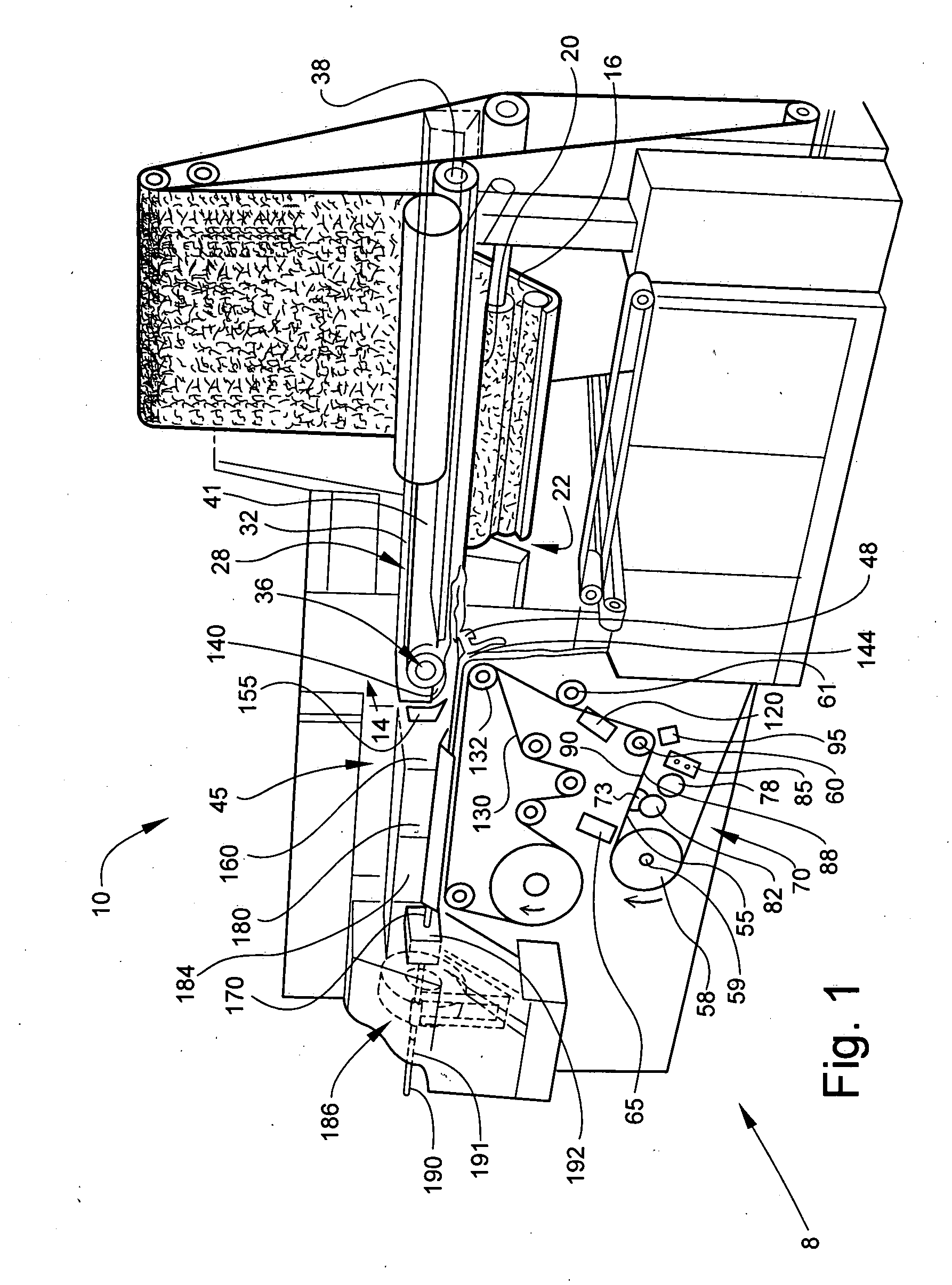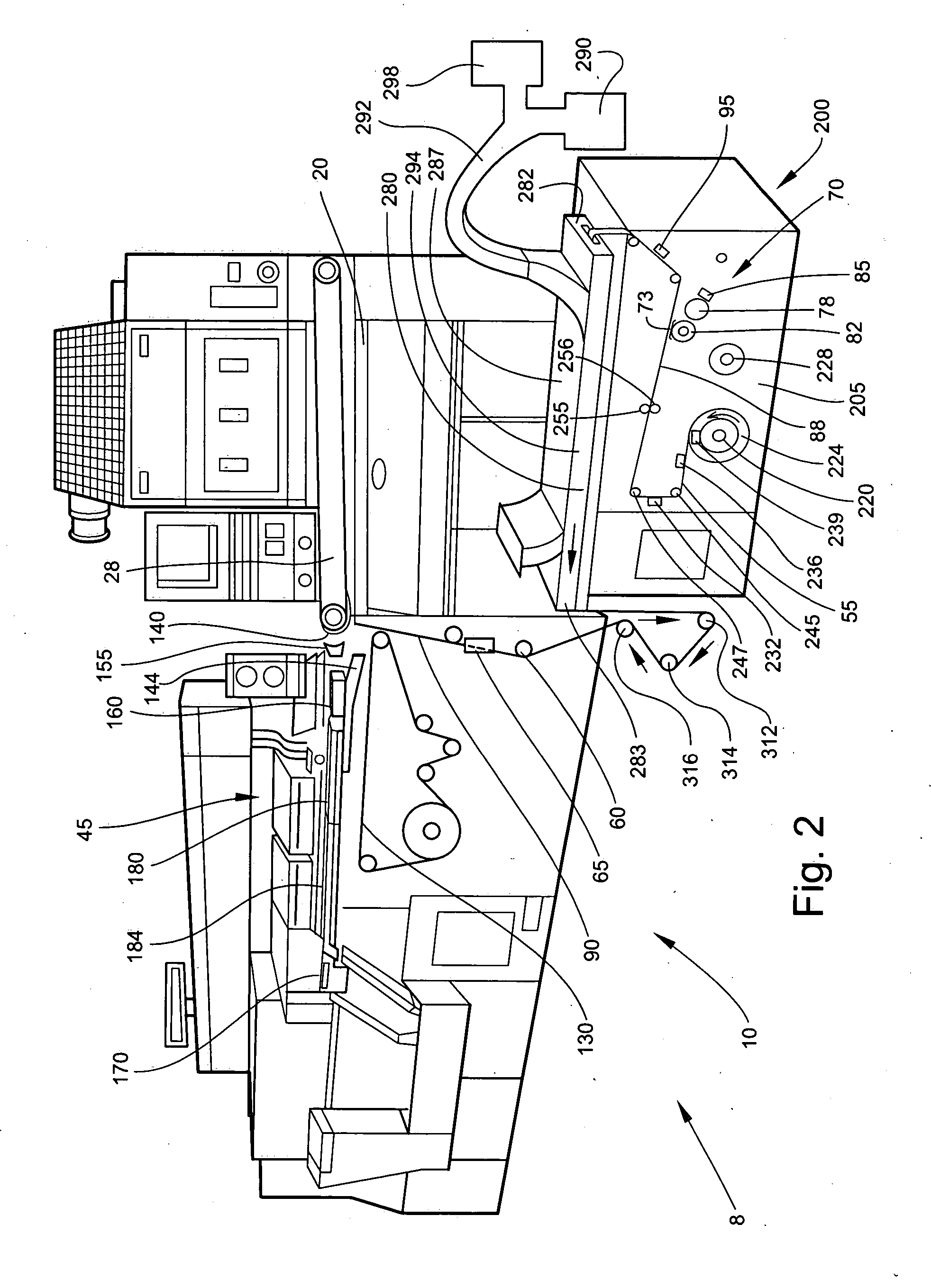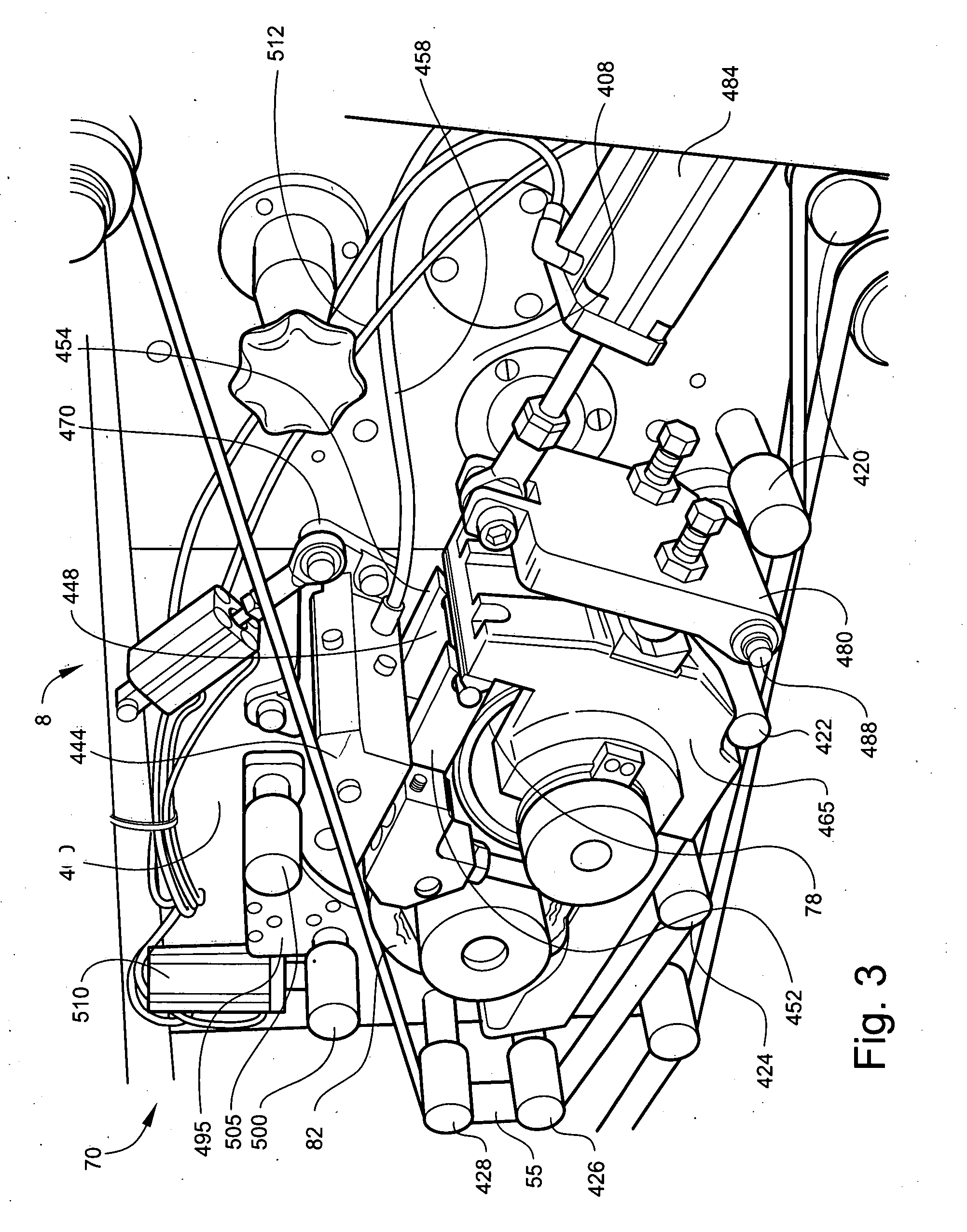Materials, equipment and methods for manufacturing cigarettes
a technology for cigarette rods and materials, applied in the field of cigarette rods manufacturing, can solve the problems of paper wrappers to which the additives are applied, paper breaks, paper wetness in the paper wrapper, etc., to minimize, avoid or prevent the transfer of additive materials, the effect of reducing the contact between the paper web and the finger rail assembly
- Summary
- Abstract
- Description
- Claims
- Application Information
AI Technical Summary
Benefits of technology
Problems solved by technology
Method used
Image
Examples
Embodiment Construction
[0052] Aspects and embodiments of the present invention include cigarette making machines and components thereof that are useful for manufacturing cigarettes, and in particular, that are useful for transferring and retaining additive material on a paper wrapping web in an efficient, effective and desired manner. FIGS. 1-28 illustrate those aspects and embodiments. Like components are given like numeric designations throughout the figures.
[0053] A conventional automated cigarette rod making machine useful in carrying out the present invention is of the type commercially available from Molins PLC or Hauni-Werke Korber & Co. KG. For example, cigarette rod making machines of the type known as Mk8 (commercially available from Molins PLC) or PROTOS (commercially available from Hauni-Werke Korber & Co. KG) can be employed, and can be suitably modified in accordance with the present invention. A description of a PROTOS cigarette making machine is provided in U.S. Pat. No. 4,474,190 to Bran...
PUM
 Login to View More
Login to View More Abstract
Description
Claims
Application Information
 Login to View More
Login to View More - R&D
- Intellectual Property
- Life Sciences
- Materials
- Tech Scout
- Unparalleled Data Quality
- Higher Quality Content
- 60% Fewer Hallucinations
Browse by: Latest US Patents, China's latest patents, Technical Efficacy Thesaurus, Application Domain, Technology Topic, Popular Technical Reports.
© 2025 PatSnap. All rights reserved.Legal|Privacy policy|Modern Slavery Act Transparency Statement|Sitemap|About US| Contact US: help@patsnap.com



